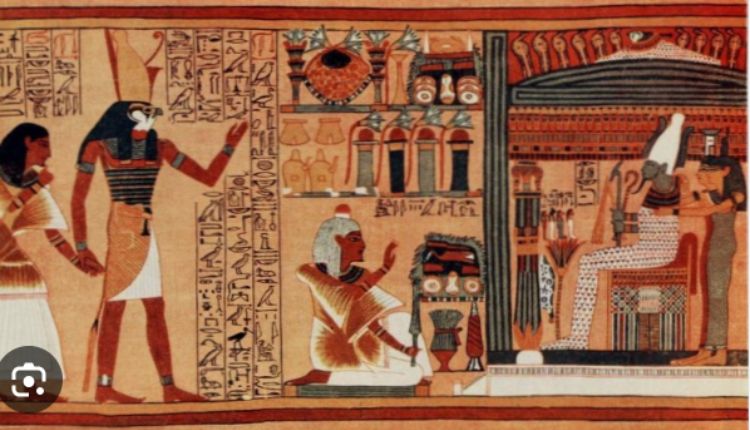The Celtic Religion: Unveiling The Enigmatic Spiritual World Of Ancient Europe
Introduction:
The Celtic civilization, spanning from the early Iron Age to the Roman conquest, held a rich tapestry of religious beliefs and practices that captivated the hearts and minds of its people. While the Celtic religion has left behind few written records, the remnants of their ancient culture and archaeological findings provide valuable insights into their unique spiritual world. In this article, we will delve into the fascinating aspects of the Celtic religion, exploring their pantheon, rituals, festivals, and the enduring legacy that continues to influence contemporary spiritual practices.
I. Origins And Beliefs Of The Celtic Religion:
The origins of the Celtic religion can be traced back to the Indo-European migration that brought Celtic-speaking tribes into Europe around 1200 BCE. The Celts were a polytheistic society, and their belief system centered around the worship of various deities who represented natural elements, animals, and celestial bodies. Their pantheon was complex and multifaceted, with gods and goddesses embodying both benevolent and malevolent forces.
The Celtic worldview was deeply connected to the natural world, with sacred sites such as forests, rivers, and hills believed to be dwelling places of the divine. Trees, especially oak and mistletoe, held particular significance in their spiritual practices, serving as symbols of strength, rebirth, and eternal life.
II. Sacred Rituals And Practices:
Rituals played a pivotal role in the Celtic religion, as they were seen as a means to communicate with the gods and maintain harmony with the natural forces. The Druids, revered priests and scholars, played a central role in conducting these rituals and acting as intermediaries between the mortal and divine realms. They were responsible for presiding over ceremonies, performing sacrifices, and interpreting omens.
Among the notable rituals were seasonal festivals, such as Beltane, Samhain, Imbolc, and Lughnasadh, which celebrated the cycles of nature, agricultural events, and the changing of the seasons. The Celts also believed in the concept of “thin places,” where the boundary between the earthly and spiritual realms was porous, allowing for easier communication with the divine.
III. The Celtic Otherworld:
The Celtic religion envisioned an Otherworld, a realm separate from the mortal plane, inhabited by divine beings and departed souls. This Otherworld was a place of eternal youth, abundance, and joy. Heroes and adventurers in Celtic mythology often embarked on quests to this realm, seeking wisdom, healing, or divine blessings.
The belief in the Otherworld also influenced Celtic burial practices, with burial mounds and tombs considered doorways to the realm of the ancestors. These burial sites were constructed with great care and were often adorned with precious objects, reflecting the belief in an afterlife and the importance of honoring the deceased.
IV. The Decline Of Celtic Religion:
The spread of the Roman Empire and the rise of Christianity marked a turning point in the Celtic religion’s trajectory. Roman conquest brought foreign influences and deities, leading to syncretism between Celtic and Roman beliefs. As Christianity gained momentum, Celtic religious practices faced suppression, and many sacred sites were repurposed or destroyed.
V. The Celtic Legacy:
Despite the decline of the Celtic religion, its legacy endured through folklore, myths, and traditions passed down through generations. Celtic elements persisted in the art, literature, and cultural practices of regions once inhabited by Celtic tribes, leaving an indelible mark on the identity of modern-day Celtic nations.
Conclusion:
The Celtic religion remains a captivating and enigmatic aspect of ancient European history. Although much of their beliefs and practices have been obscured by time and historical events, the remnants of their spiritual world continue to spark interest and fascination among scholars and enthusiasts. The reverence for nature, the complexity of their pantheon, and the profound connection between the earthly and spiritual realms make the Celtic religion a unique and enduring legacy that continues to inspire spiritual seekers worldwide.
FAQs:
- Were the Celts a unified religious group?
No, the Celts were not a unified religious group. The Celtic civilization was comprised of numerous tribes, each with their own local variations of religious beliefs and practices. While there were certain common elements, such as the reverence for nature and a polytheistic worldview, the specifics of their deities, rituals, and myths could differ from tribe to tribe.
- How did the arrival of Christianity impact the Celtic religion?
The arrival of Christianity significantly impacted the Celtic religion. As Christianity spread across Europe, Celtic religious practices faced suppression, and many elements of their indigenous belief system were assimilated into Christian traditions. Pagan festivals were often replaced by Christian holidays, and sacred sites were repurposed as Christian shrines and churches. Despite these changes, some aspects of Celtic spirituality and folklore persisted, creating a unique blend of Celtic and Christian elements in the cultural fabric of Celtic regions.




